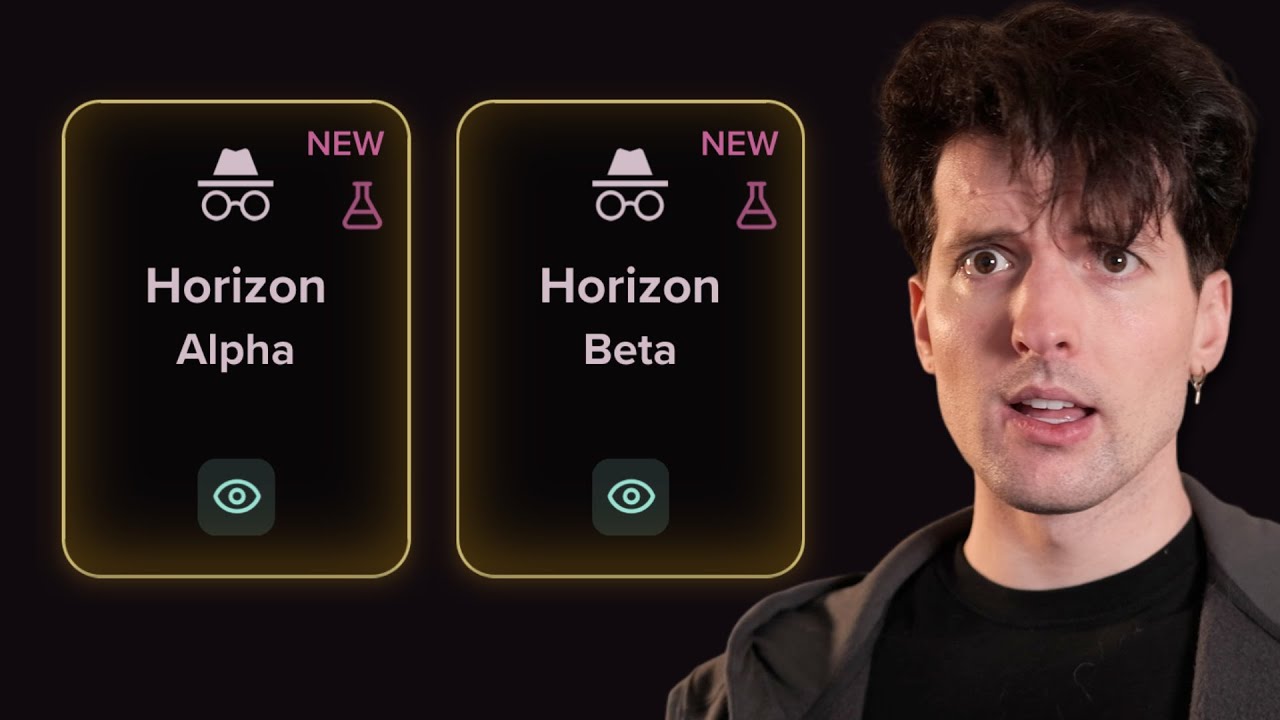The video introduces the anonymous Horizon Alpha and Beta AI models, which excel in UI design and code generation, outperforming established models like Anthropic’s Cloud4 Opus with impressive speed and aesthetic quality despite some technical and privacy uncertainties. While their origins and long-term availability remain unclear, these free-to-use models represent a significant advancement in practical AI applications, prompting excitement and cautious optimism about their future impact.
The video discusses the recent emergence of two anonymous AI models named Horizon Alpha and Horizon Beta, which have been released on Open Router and are impressively capable, especially in UI and design generation. The creator tested these models by asking them to generate UI mockups for a fictional image studio app using Next.js, comparing their outputs to those from leading models like Anthropic’s Cloud4 Opus. The Horizon models significantly outperformed these established models, producing more aesthetically pleasing and sophisticated designs, particularly excelling in gradients and styling. Despite their high quality, the models are free to use for now but come with uncertainties about data privacy and longevity.
The presenter explores the origins and nature of these Horizon models, noting that they are anonymous with no clear information about their creators or underlying architecture. Attempts to identify them through tokenization patterns suggest similarities to Quen models, but this remains speculative. The models are non-reasoning by design, although Horizon Alpha briefly exhibited reasoning capabilities due to what appears to be a bug. They generate responses very quickly, around 90 to 125 tokens per second, and show strong performance in tasks involving SVG generation and tool usage, such as planning with to-do lists.
Comparisons with other AI models reveal that Horizon’s outputs are stylistically similar to GPT-4.1 but friendlier and less clinical, while Chinese models struggle with certain cultural knowledge, such as skateboarding history. The Horizon models scored moderately on a custom skateboarding benchmark, outperforming some but not reaching the level of top OpenAI models. They also perform poorly on math and some traditional benchmarks, but the presenter argues that these benchmarks do not fully capture real-world utility, where Horizon excels in practical tasks like UI design and code generation.
The video also highlights technical challenges encountered when integrating Horizon models with tools like Cursor and Open Router, including connection errors and rate limits. Despite these issues, the models consistently produce high-quality outputs that impress the presenter. There is speculation that Horizon might be related to another anonymous model called Lobster, which shares similar stylistic traits. The models are likely part of a major lab’s experimental release to gather user feedback and improve rapidly, as evidenced by the quick transition from Alpha to Beta versions.
In conclusion, the Horizon models represent a remarkable advancement in AI-generated UI and design, offering free access to capabilities that surpass many paid options. While their origins and long-term availability remain unknown, their quality and speed make them highly attractive for developers and designers. The presenter encourages viewers to try the models soon, preferably through platforms like T3 Chat, and anticipates more exciting developments in the AI space in the near future. Overall, the video conveys enthusiasm and cautious optimism about these anonymous models and their potential impact.
